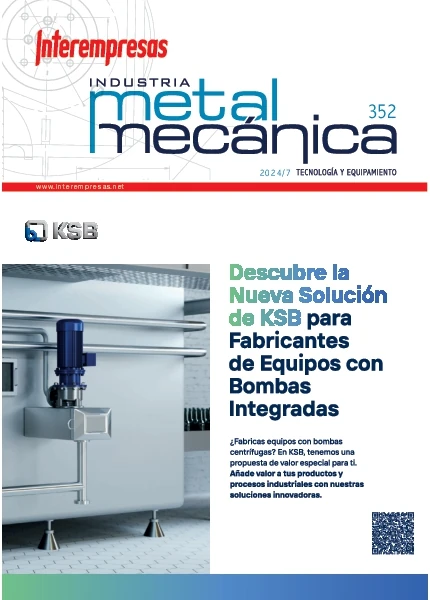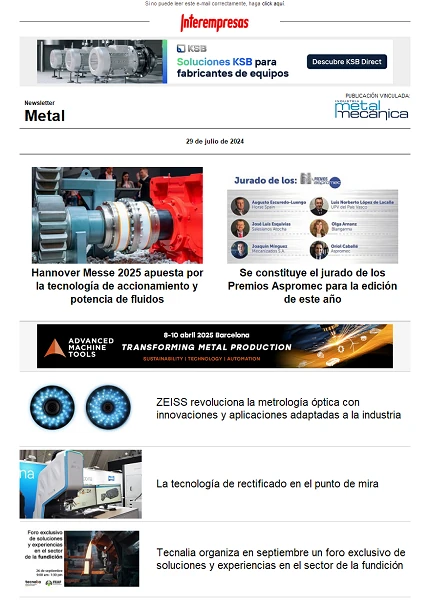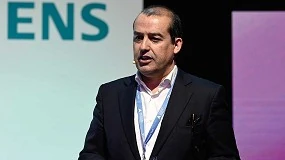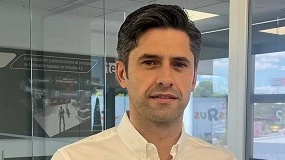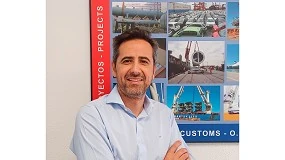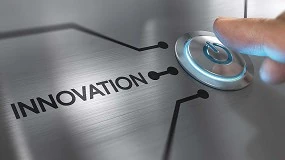What should we do with 1.2 million vehicles no longer in use?
July of Juan Sáez, area coordinator of automotive programs of the Ministry of science and technology Chief explained the details of the European directive, whose objectives, he said, are reuse, recovery and recycling, the limitation of the use of hazardous substances and the establishment of management systems of vehicles no longer in use (OUV). He pointed out that the establishment of OUV management systems, is to ensure that treatment centres are authorized. A first phase after the delivery of a vehicle to the system, he said, is decontamination. In addition, a vehicle no longer in use contains reusable pieces. On the other hand is the recovery of plastics, to which the representative of the Ministry referred a surprising way, as "a quite outstanding subject".
Mar García Ramos, senior manager of Price Waterhouse Coopers, were arrested in all the policy details and the work that this consultant is doing for Sernauto, especially with regard to the creation of Ecopartes. Said, the Directive 2000/53, on vehicles at the end of its useful life (OUV directive) was adopted in October 2000, establishing as a maximum date of adaptation to the legislation of each member country on April 21, 2002. Along with the packaging and packaging waste directive and the directive on electrical and electronic equipment, is one of the so-called laws on 'Policy Integral of product', which aims to take into account the environmental impact of products since its inceptionreducing the use of dangerous substances, by promoting the energy efficiency of products and the reduction of emissions during their use, minimizing waste and increasing the possibilities for recycling at the end of its useful life.
If in 1997, the number of casualties of Spain vehicles was of about 500,000, this figure was close to one million in 2002, it will be around one million one hundred in 2003 and it will exceed one million two hundred in 2004
Quantitative objectives of the directive


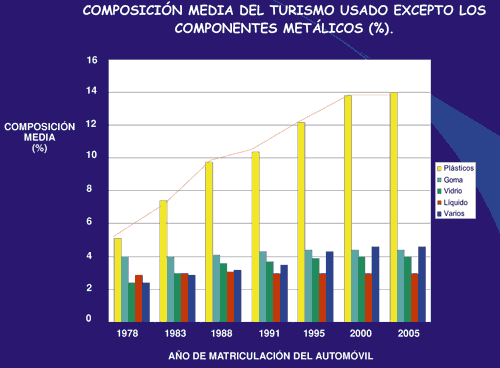
Different options in Europe
Various options can be divided into three models: fee-based system, based on the market (open system) and the system company to company. The first is which has followed Holland, where a single fee is charged by a not-for-profit organization the first owner of the vehicle in the waste management concept. With this share subsidizes the cost of the dismantling, transportation or recycling of the OUV. The open system, as adopted in France, does not create specific funding mechanisms, but expected the market to ensure compliance with the objectives. And the company to company system (United Kingdom and Germany, and similar to which is being introduced in Spain) assigns individual responsibilities to the producers of vehicles on their brand. Vehicle manufacturers are required to finance a system of collection and treatment of their own vehicles no longer in use, to comply with the objectives and to demonstrate that it has complied.
In Spain, the Royal Decree which transposes the directive to our regulations, refers to the establishment of mandatory systems for collecting (vehicles and components). Vehicle manufacturers must take charge of its brand vehicles for the purpose of their transfer to an authorised treatment facility and collection of pieces systems must deliver them to managers for their recovery or treatment. The objectives for recycling and recovery can be guaranteed for individually or jointly, through an integrated system of management (GIS).
The point of view of Sernauto
The Ecopartes project which Sernauto is pushing, aims to lead to the creation of a non-profit, which could become well integrated management system either as a sectoral voluntary agreement.
Ecopartes aims to provide coverage to the obligations of the manufacturers of parts and components of the car you become waste during the useful life of the same and not when the vehicle becomes an OUV, although he did not rule out joint work with the system that is organized for the management. They will not be Ecopartes products that already have a specific legislation, such as tires, nor expendable vehicle waste.
Vehicle manufacturers
The figures
More interesting numbers. If in 1997, the number of casualties of Spain vehicles was of about 500,000, this figure was close to one million in 2002, it will be around one million one hundred in 2003 and it will exceed one million two hundred in 2004. This means that in 2003, there will be a weight of 1 million tonnes of waste to manage, figure that will be close to 1 million about two hundred tonnes in the year 2004
It is also interesting to note is how varying the composition of a car. If the steel in 1976-1980 represented a 79 per cent of a vehicle, in the period 2001-2006, this figure is around 70, 1%, whereas in those same periods plastics spend 5 to 8.5 per cent.
In the opinion of the Secretary general of Ecoauto, current deficits in the search for a response to the directive are the delay in the transposition of European legislation, overcoming or stage of draft national plans of actionpoor infrastructure and the lack of support. One of the consequences of this situation is that he costs less to reuse/recycling or landfill.




